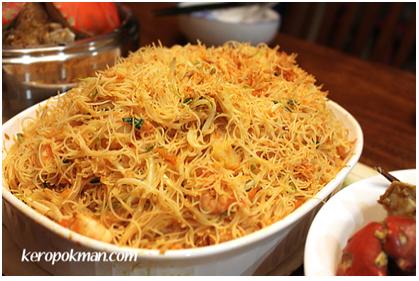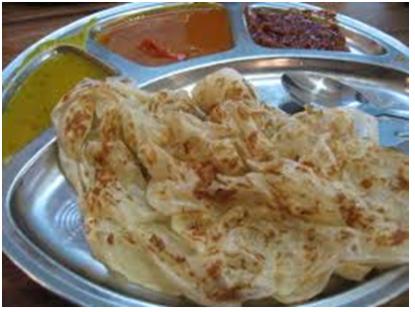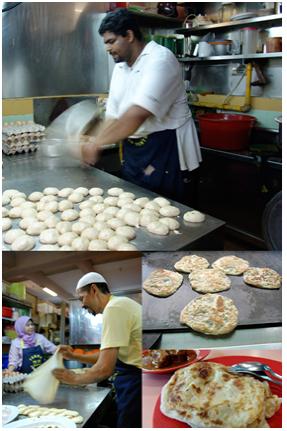Malaysian cuisine, mixture of various ethnic foods
Food, one of the important physiological needs is a metabolic requirement for survival and body energy. Generally, the perception of tastes can known as “3S1B” which means sweet, sour, salty and bitter. Food strongly represents one’s country’s living styles and culture. Therefore, countries throughout the world have their unique and special food. Malaysia’s population is basically made up of 3 main ethnic groups: Malays, Chinese, and Indians. Therefore, Malaysian cuisine is influenced by a variety of cultures and from these mainly the three ethnic groups. However, due to historical migrations as well as Malaysia’s geographical advantage, Malaysia’s culinary style is a combination and mixture of Malay, Chinese, Indian, slightly Thai and Arabian cuisines. This has made Malaysian food full with various wonderful tastes!
Malaysian staple foods are rice, noodles and bread. The most popular dishes made from rice in Malaysia is nasi lemak. Nasi lemak’s origins are mostly from Malay traditional food; the rice steamed with coconut milk gives a rich coconut fragrance and aroma, then the rice is served together with fried and crispy anchovies, crispy fried peanuts, fresh sliced cucumbers, hard boiled eggs or fried eggs and the most important is eating it together with a spicy chili paste known as sambal. As time passed, nasi lemak became Malaysia’s favorite food and has often been called the national dish, too.
However, the different ethnic culinary skills as well as living cultures of Malay, Chinese, or Indian give nasi lemak a slightly different taste due to the sambal taste. The Malay sambal in nasi lemak tends to be a bit sweet and spicy, while Malaysian Chinese-cooked sambal tends to be just spicy and Malaysian Indian sambal in nasi lemak tends to have a mild spicy taste. In short, due to the different ethnic living cultures, even the same menu-nasi lemak, will taste slightly different. No matter how different the taste, I still feel that having a plate of rich tasting nasi lemak with a cup of aromatic kopi-o (English: Malaysian style heavy taste of coffee) for breakfast is the best ever. Nasi lemak is commonly served as a breakfast dish in Malaysia, and is now often eaten at any time of the day as well. Nasi lemak is easy to get in a local coffee shop or restaurant all throughout Malaysia even though it might be served with slightly different tastes and styles. Other than that, they are also many other wonderful rice menus that can be easily found in Malaysian cuisine such as nasi dagang, nasi campur, nasi kelabu, nasi kandar and so on.

Malaysia's favorite: Nasi lemak served with the banana leaves could increase the rice fragrance (Photo: rasamalaysia.com)
Noodles are another popular food easily found all over Malaysia, especially in Malaysian Chinese cuisine. The most common noodles are bi hoon (English: rice vermicelli), kuay teow (English: flat rice noodles), mee suah (English: wheat vercmicelli), mee (English: yellow noodles, yee mee (English: golden wheat noodles), and langka (English: transparent noodles made from mung beans). These noodles are usually easy to find in Malaysian Chinese cuisine and some can be found in Malay and Indian cuisine. Among these noodles, I like to eat bi hoon the most, particularly fried bi hoon, as well as char kuey teow (English: fried kuay teow). Actually, I do not know why I like the bi hoon so much, but every time it is my first choice for noodle meals. Perhaps it is because it is made from rice and provides me with enough energy after every serving of bi hoon. Malaysian Chinese cuisine most probably means Cantonese, Fujian, and Hakka cuisines as Malaysian Chinese historical migrations came from these regions a long time ago from China. With the influence of different origins and geographical locations, Malaysian Chinese cuisine more or less still keeps the traditional tastes, but has added local flavors and ingredients to become Malaysian Chinese cuisine now.
Bread is also another popular and easy grab food in Malaysia. The bread described here is the Malaysian Indian style bread and the most popular is roti canai (English: similar with the fried bread concept). Roti canai is made from thin dough and cooked into a pastry just like bread. Normally, roti canai is served together with Indian fragrant curry paste, which tastes really delicious. Besides nasi lemak, roti canai is also a popular Malaysian breakfast and also suitable for anytime of the day. Having a cup of tea tarik (English: milky tea) and one roti canai is one of the best combinations and a popular eating style among Malaysians. The other Malaysian Indian breads are dhosai, roti tisu, idli, roti pisang, roti telur, roti bawang and so on and have become popular throughout the Malaysian society.
In short, no matter whether Malay, Chinese or Indian cuisines, in Malaysia they can be recognized as fusion cuisines, which were the results of a combination between traditional culinary style and modern local culinary style. There are too many delicious and great foods in Malaysia. I think Malaysia could be called the ‘food paradise’ and through tasting Malaysian cuisine, one can also taste its rich culture as well.






























































